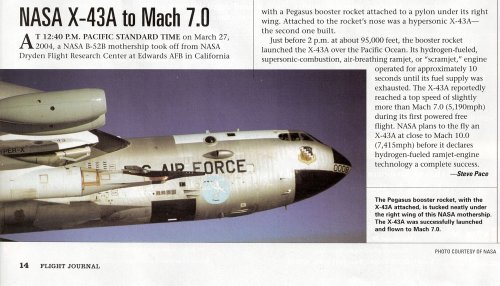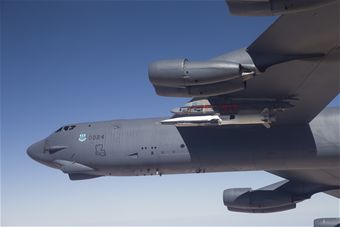sferrin said:
bipa said:
sferrin: reference about that ASALM Mach 5.6+ flight 30+ years ago ??
It was on one of the USAF research labs sites history section. About 10 years ago. It was a one-paragraph blurb.
http://www.designation-systems.net/dusrm/app4/asalm.html
http://www.secretprojects.co.uk/forum/index.php/topic,466.0.html
If you felt ambitious you could probably dig through the AIAA and Flight International archives to find more information.
Thanks.
I already knew those references, but I have always been skeptical about this story of a vehicle "accidentally" reaching M=5.5 while its design was for M=4 to 4.5, so I was wondering whether you had other references.
Unfortunately I can't find a good picture of the MM PTV vehicle, but Flateric has posted some good drawings and (though I know it is hard to tell from the naked eye) the inlet design does not at all look like it could allow positive thrust beyond M>5. If otherwise, I agree with you that it is a shame the US have not invested more into further developing this vehicle (and inlet concept).
Could it be that it was the
rocket that went out of control (impulse too big?) and eventually dropped the ramjet above M=5 ? Also kind of hard to believe, but...
On the thermal aspects... On my calculator, total temperature @ M=5.4 and 12,000 m should be about 1100-1200°C (2000-2200°F).
It may leave you with a wall temperature around 1000-1100°C (1800-2000°F).
While at M=4.5 (same altitude), the total temperature should be around 800°C (1400-1500°F) and wall temperature around 700°C (1300°F).
(any hypersonics expert please feel free to rectify my rough estimates)
So from a materials standpoint, that looks like a completely different story between M=4.5 and M=5.4. Like titanium skins, high temperature edges (maybe CMC)... In any case, it seems unlikely that this M=5.4 ride lasted for more than a few seconds.


